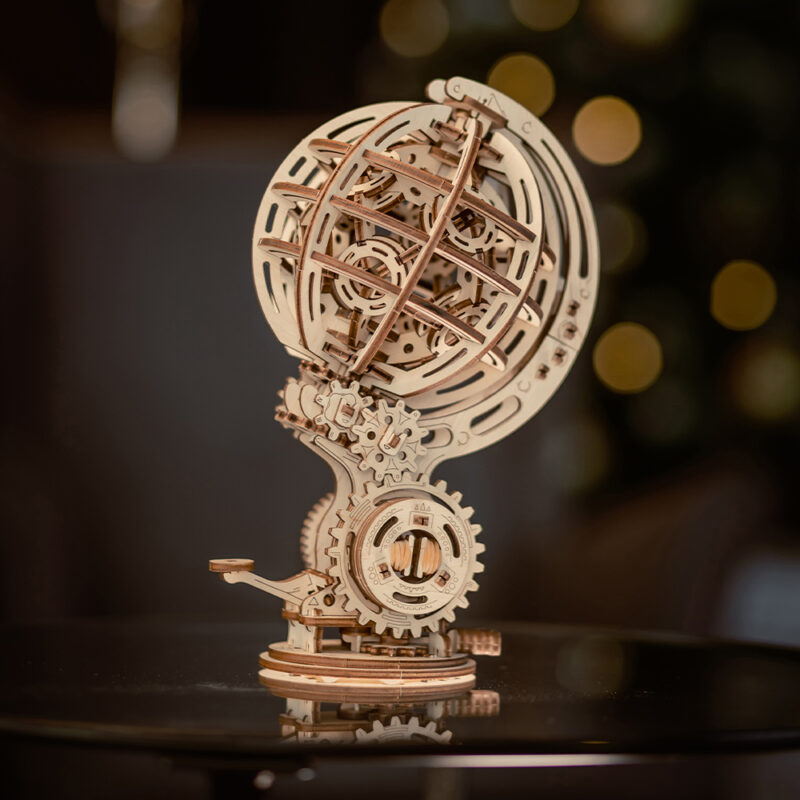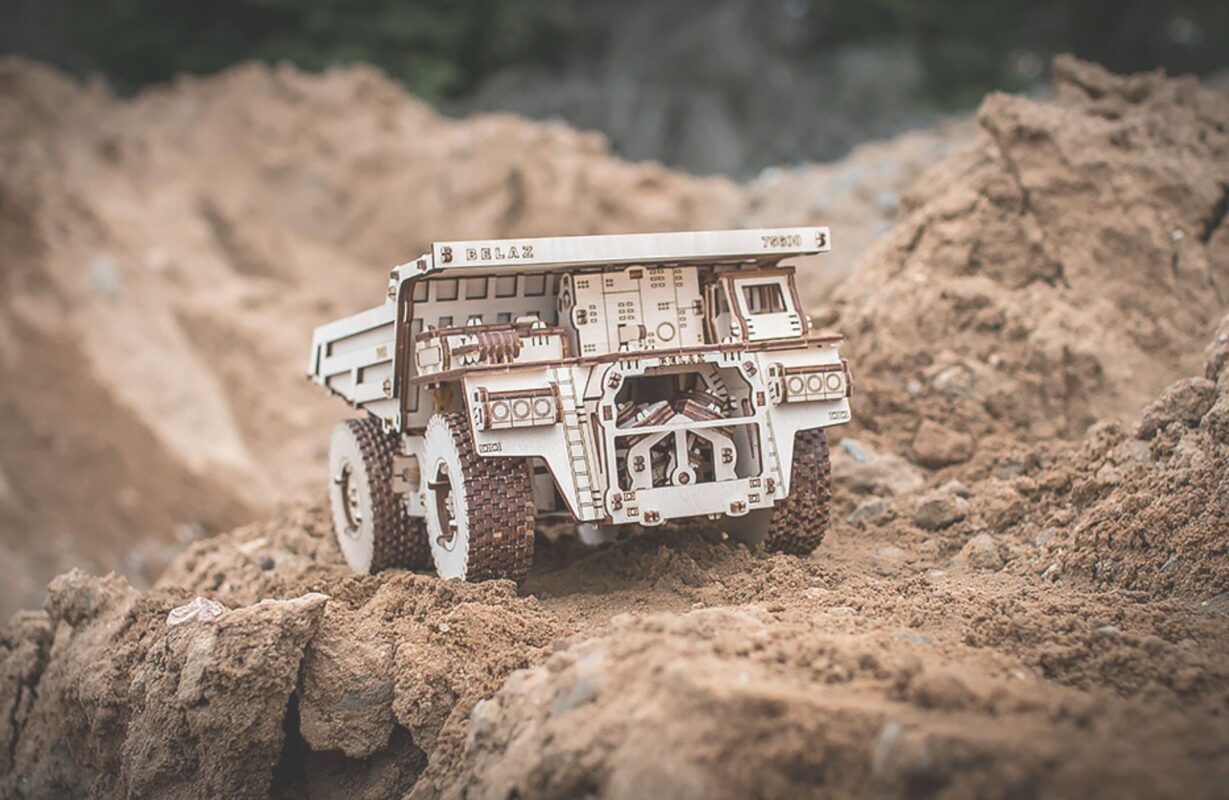Parenting
Manufacturing Process of 3D Wooden Construction Models
The Complete Guide to 3D Wood Model Fabrication: From Design to Your Home
Have you ever held a beautifully crafted wooden 3D Model in your hand and wondered what path it took from conception to completion? These intricate masterpieces that fascinate both children and adults are not produced by accident-they are the result of an extraordinary combination of cutting-edge technology and traditional craftsmanship.
What Makes 3D Models in Wood Special?
3D wooden models have experienced an explosion in popularity in recent years, and for very good reason. Unlike traditional flat puzzles, these three-dimensional creations transform from scattered pieces into impressive architectural marvels, vehicles or artistic sculptures. But the magic is not just in the final product-it's in understanding how these extraordinary puzzles come to life.
The Creative Genius Behind Every Project
Where It All Begins: The Concept Phase
Contrary to popular belief, the 3D wooden models are not mass produced by mindless machines. Every single design begins with a human touch-skilled designers who combine artistic vision and engineering precision. These creative professionals use sophisticated computer-aided design (CAD) software to meticulously craft each component.
The design process is more complex than one might imagine. Designers must consider:
- Target difficulty level - Will this challenge a novice or experienced builder?
- Appropriateness by age - What skill level does the target audience possess?
- Structural integrity - Will the final model be stable and durable?
- Aesthetic attractiveness - Will it look impressive when completed?
- Thematic coherence - How well does the intended subject represent?
From Digital Design to Production Specifications
Once the digital design is refined, designers create detailed production specifications. Every measurement, every curve, every point of connection is precisely documented. This attention to detail ensures that when your puzzle arrives, every piece fits together perfectly.
The Wood Selection Process: Quality Begins at the Source
Choosing the Perfect Lumber
Not all woods are the same, especially when it comes to precision puzzle making. The most commonly used woods include:
Poplar Wood: Lightweight yet strong, poplar offers excellent workability and a smooth finish. Its fine grain makes it ideal for intricate cuts.
Maple Wood: Known for its durability and beautiful natural color, maple provides exceptional strength for larger models.
Walnut Wood: Premium choice for high-end puzzles, walnut offers rich color variations and superior longevity.
Birch Wood: With its compact grain structure, birch ensures precise cuts and minimal chipping.
The Critical Preparation Phase
Raw lumber undergoes rigorous preparation before it is ready for production. The wood must be:
- Free of defects: No knots, cracks, or irregularities that would compromise the final product
- Adequately seasoned: Moisture content reduced to 6-8% to prevent deformation
- With uniform grain: Uniform grain direction for predictable shear behavior
This preparation phase can take weeks, but it is essential to create puzzles that maintain their shape and appearance over time.
Precision Cutting: Where Technology Meets Art.
The Revolution of Laser Technology
The transformation from design to physical parts takes place through computer-controlled laser cutting machines. These incredible devices represent the pinnacle of precision manufacturing, capable of:
- Extreme accuracy: Tolerances measured in hundredths of a millimeter
- Consistent reproduction: Hundreds of identical pieces with zero variation
- Smooth edge finish: Laser heat naturally seals the wood fibers
- Capacity for complex shapes: Intricate curves and impossible angles with traditional tools
The laser cutting process is fascinating to watch. The computer reads the CAD file and guides the laser beam along predetermined paths, essentially "drawing" each part with concentrated heat. The result? Perfectly shaped components that fit together like clockwork.
The Art of Assembly: Where Human Skill Shines.
Master Craftsmen at Work
Despite all the technological advances, the assembly stage remains distinctly human. Experienced assemblers, often with years of experience, carefully construct each model by hand. This process requires:
Patience and Accuracy: Each layer must be placed exactly right before the adhesive sets.
Specialized Tools: Tweezers to handle small pieces, clamps to maintain pressure, and precision applicators for controlled glue application.
Problem-Solving Skills: Experienced assemblers can identify and correct minor inconsistencies that could affect the final product.
Quality Awareness: Constant vigilance ensures that every connection meets strict standards.
The Delicate Balance of Adhesion
The bonding process is perhaps the most critical aspect of assembly. Too little adhesive and the pieces may separate during shipping or use. Too much and excess glue can ruin the appearance or interfere with moving parts. Experienced assemblers develop an intuitive sense for the perfect amount.
Surface Finish: Protect and Beautify
Preparation for Perfection
Before any finish is applied, each assembled model undergoes meticulous surface preparation. Fine-grit sandpaper removes any minor imperfections from the laser cutting process, while careful inspection ensures a consistent surface texture.
The Final Touch
The finishing process varies depending on the desired final appearance:
Transparent Finishes: Multiple thin layers of clear lacquer or polyurethane protect the wood while showing off its natural beauty. Each layer must dry completely before the next application to prevent dripping or opacity.
Colored Finishes: Some models receive custom color treatments to enhance realism or artistic appeal. These finishes require even more skill to achieve even coverage without obscuring fine details.
Special Treatments: Premium models may receive hand-rubbed oil finishes or aging treatments for unique visual effects.
Quality Control: Ensuring Excellence in Every Box
Strict Inspection Standards
Before any 3D wooden model leaves the factory, it undergoes comprehensive quality control tests. Experienced inspectors examine every aspect:
- Dimensional accuracy: All pieces must fit together easily
- Surface quality: No scratches, dents or imperfections in the finish
- Completeness: Each piece checked and shaped correctly
- Accuracy of instructions: Assembly guides verified against the actual model
The Final Test: Complete Disassembly
Perhaps surprisingly, quality control includes complete disassembly of each finished model. This process verifies that:
- All connections work properly
- No parts are missing or damaged
- The assembly sequence matches the instructions
- The model can be successfully reconstructed by the end user
Packaging: The Journey Home
Protecting Your Investment
Packaging is not just about getting the product to market-it is about ensuring that your 3D wooden model arrives in perfect condition. Each piece is carefully organized and protected:
Individual Protection: Delicate pieces receive foam padding or protective wrapping.
Logical Organization: Parts are grouped by assembly sequence to simplify the construction process.
Integration of Instructions: Detailed and illustrated assembly guides are included with each kit.
Moisture Protection: Sealed packaging prevents moisture from affecting the wood during shipping and storage.
The Complete Experience
Modern packaging of 3D wooden models focuses on the entire user experience. From the moment you open the box, everything is designed to enhance your building journey. Clear labeling, intuitive organization, and comprehensive instructions ensure that your first impression matches the quality of the product inside.
The Environmental Advantage
Sustainable Production
An often overlooked benefit of wooden 3D models is their environmental compatibility. Unlike plastic alternatives, wooden models:
- They use renewable resources
- Require less energy to be produced
- Generate minimal waste during production
- They are completely biodegradable at the end of their life
Many manufacturers now source wood from certified sustainable forests, ensuring that your hobby does not come at the expense of the environment.
Market Trends and Future Innovations
Growing Popularity Among Different Demographic Bands.
The market for wooden 3D models has expanded far beyond traditional puzzle enthusiasts. Today's buyers include:
- Stress relief seekers: Adults discovering the meditative qualities of focused assembly.
- STEM educators: Teachers using models to demonstrate engineering principles
- Gift buyers: People looking for unique and meaningful gifts
- Collectors: Enthusiasts building libraries of completed models.
Technological Advances on the Horizon
The future of 3D wood model manufacturing looks bright, with innovations that include:
- Augmented reality instruction: Digital overlays showing assembly steps
- Custom design tools: Allow customers to create customized templates
- Smart materials: Wood treatments that change color or properties over time
- Accuracy improvements: Even tighter tolerances for increasingly complex projects
Conclusion: The Perfect Fusion of Technology and Tradition
The creation of 3D wooden models represents a beautiful marriage of cutting-edge technology and time-tested craftsmanship. From the initial spark of creativity in a designer's mind to the moment you place the last piece of your completed model, each step in the process reflects a commitment to quality, precision, and the simple joy of creation.
Understanding this manufacturing journey increases your appreciation for these extraordinary puzzles. The next time you hold a 3D wooden model in your hand, you will know the care, skill, and innovation that went into each precisely cut piece and each carefully planned connection.
Whether you are a longtime enthusiast or someone who is just discovering the world of 3-D wood models, remember that you are not simply buying a puzzle-you are investing in a piece of manufacturing art that bridges the gap between traditional woodworking and modern precision technology.
Ready to experience the magic yourself? The next time you see a 3-D wood model, you will have a whole new appreciation for the incredible journey from digital design to the finished masterpiece you hold in your hands.



